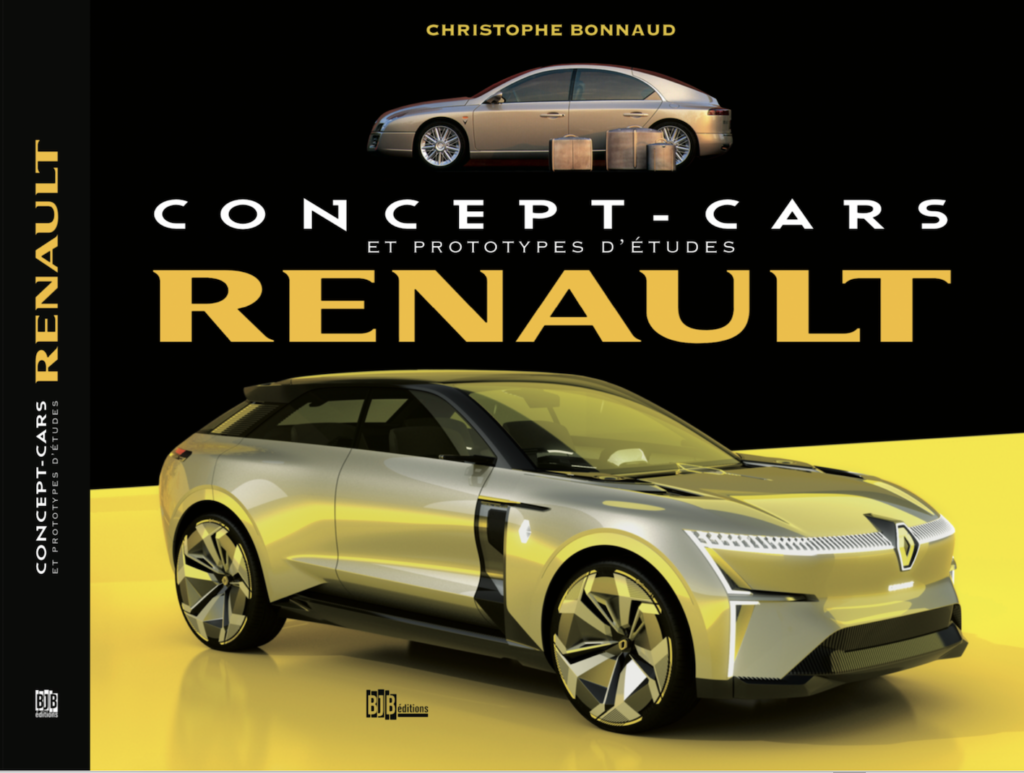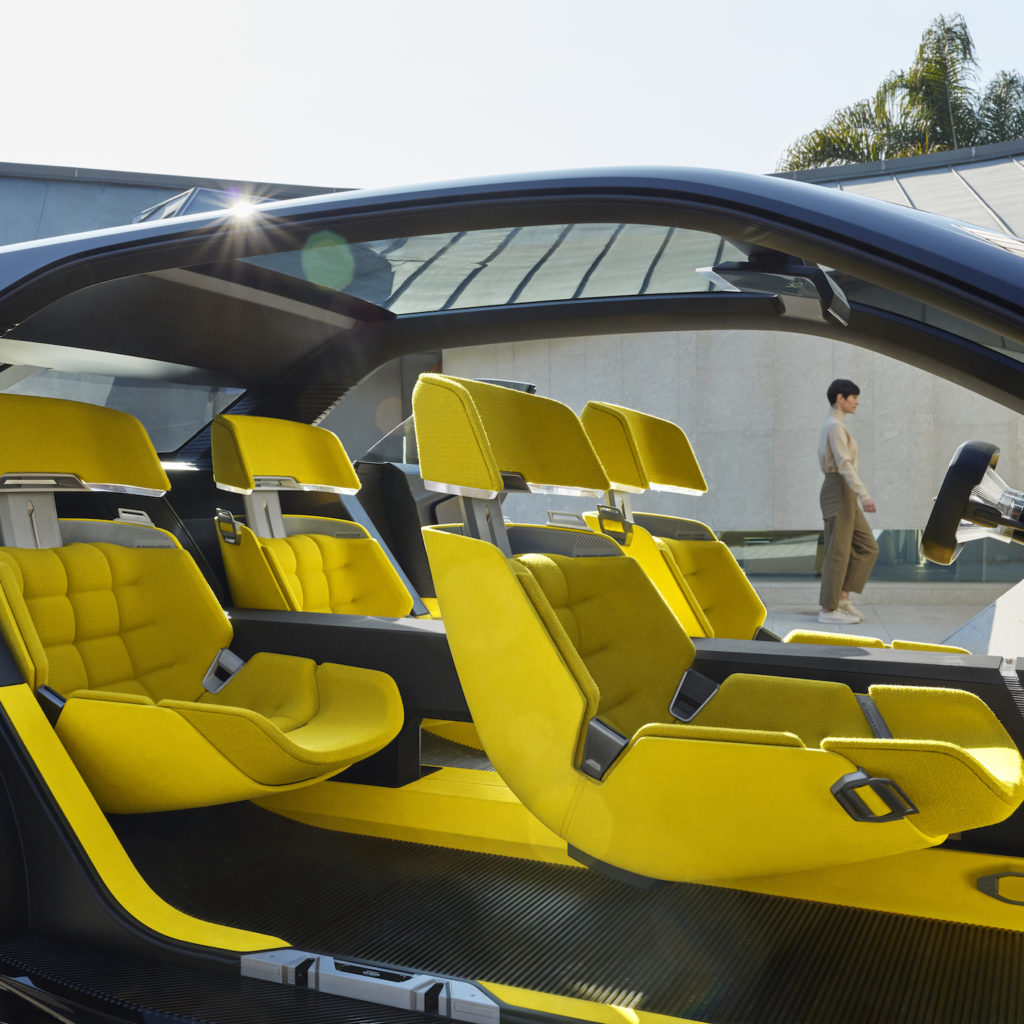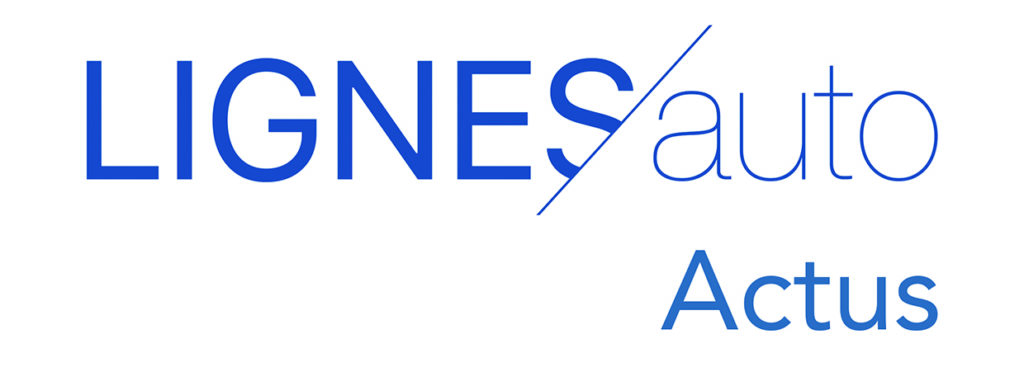
Morphoz is lying down. His passenger compartment follows the movement by taking an extra 20 cm at the rear. For the benefit of passengers or luggage. On board, the artificial intelligence follows the movement. The centre console, the backbone of this passenger compartment, too !
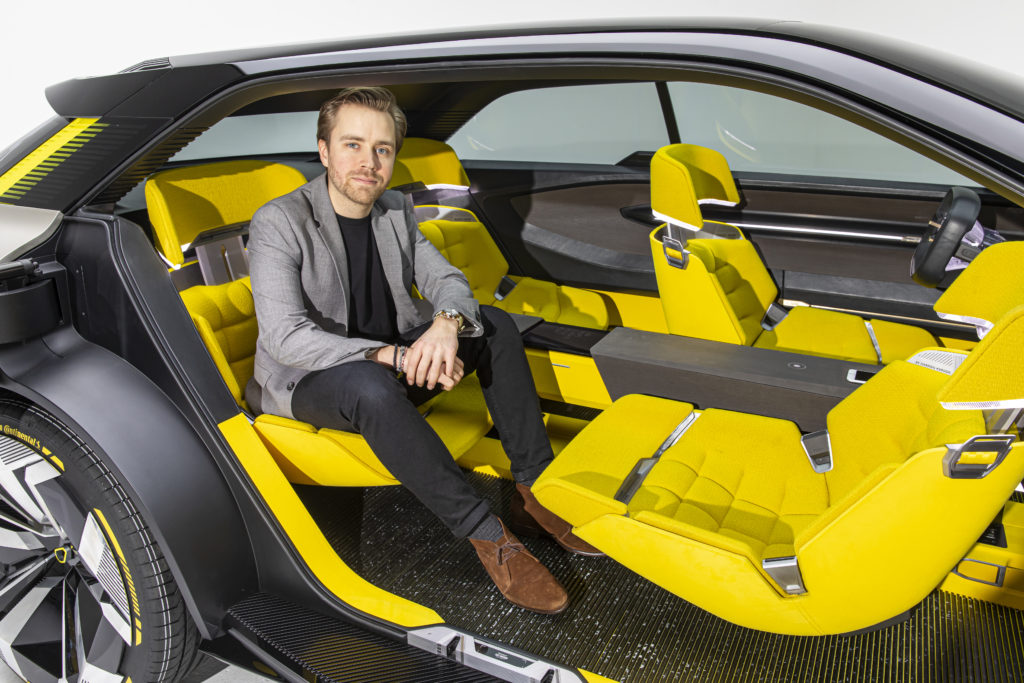
We owe the interior design to the young designer Damien Durand (above), along with Maximilian Kandler and, for colors & trim, Fanny Sérouart. The interior evolves from that of a generous compact sedan to that of a grand tourer (see our VIDEO to discover this metamorphosis). On board, we had to manage this growth crisis ! Because when the car stretches out, so does its interior.
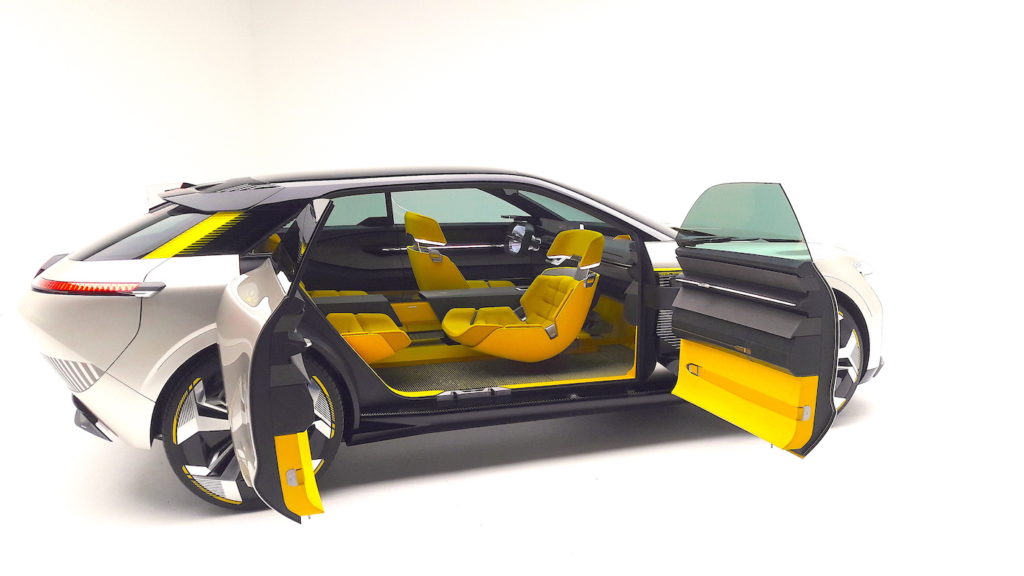
Doors with antagonistic opening to make the most of the view of the passenger compartment when they open. And that splashing yellow colour: it’s an expression of the electricity in the air, or rather, in the batteries under the floor. This yellow inevitably reminds us of the yellow of the Citroën CXperience concept – designer Jérémy Lebonnois – (below) and yet, this interior is legitimate for Renault (see the post on “When Morphoz visits the Renault attic of ideas”).

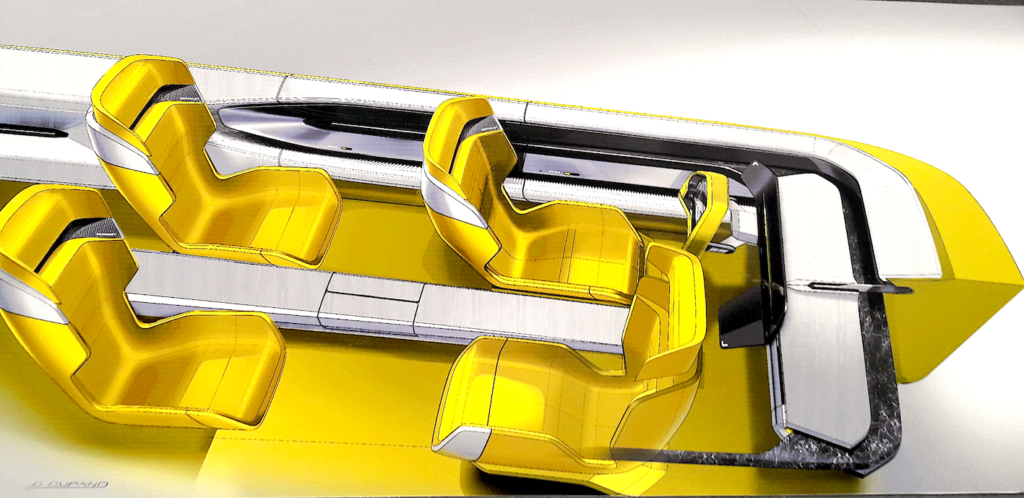
Below, the Travel configuration (car lengthened from 4.40 to 4.80 m) unveils the centre console that follows the movement and opens up a multimedia screen for rear passengers. At the front, the phone is placed on the wood of the console, a ‘soft’ wood that wraps around the smartphone to immobilise it.

Above, the passenger seat swivelled on itself, for more sharing between Morphoz occupants. The long wheelbase allows this manoeuvre, which changes the atmosphere on board. “The floor and the kinetic play between its yellow and black lines echo the Opt-Art universe of the painter Victor Vasarely,” explains Renault. It includes in its composition a recycling of… yoghurt pots! The rear seats slide according to your own settings.
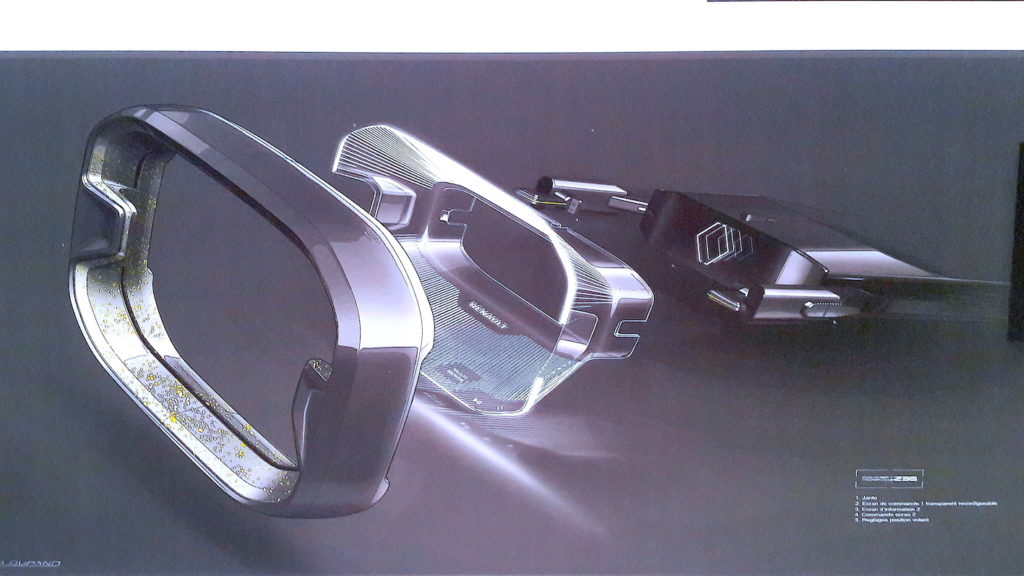
The steering wheel is very futuristic. Its rim follows the almost rectangular design of those of recent concept cars, but its hub is made of crystal glass with luminous lines and, at the bottom of the hub, a first screen gives the main information for the driver.
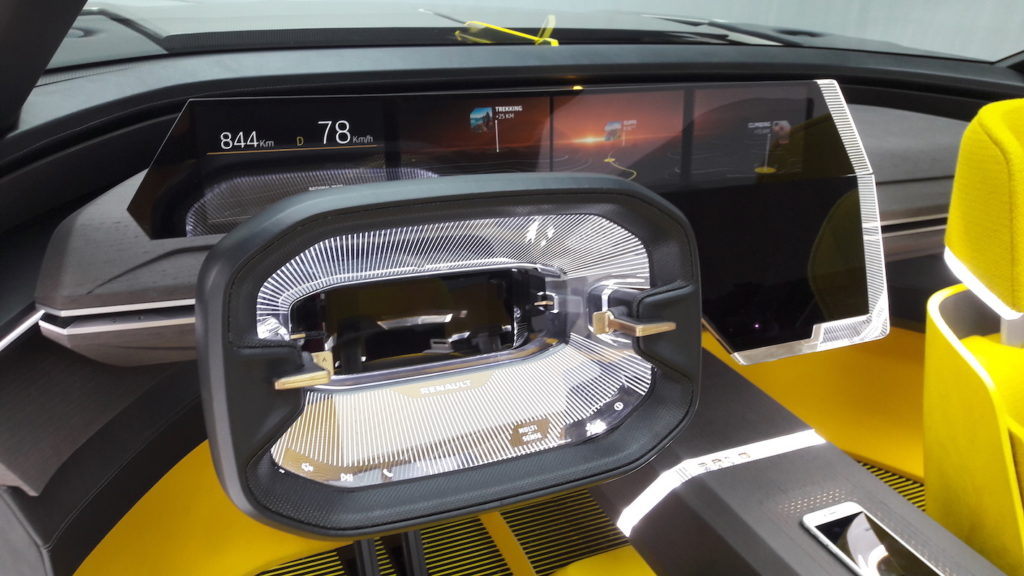
The large screen (below), consisting of an 80 cm folding OLED slab, comes out of its housing at the driver’s request. All the necessary information is there, from driving to navigation, including information given by artificial intelligence according to your habits or more simply to discover other places during your trip. Renault points out that thanks to the new CMF-EV platform, the dashboard has been moved forward and is less wide, benefiting the space on board.
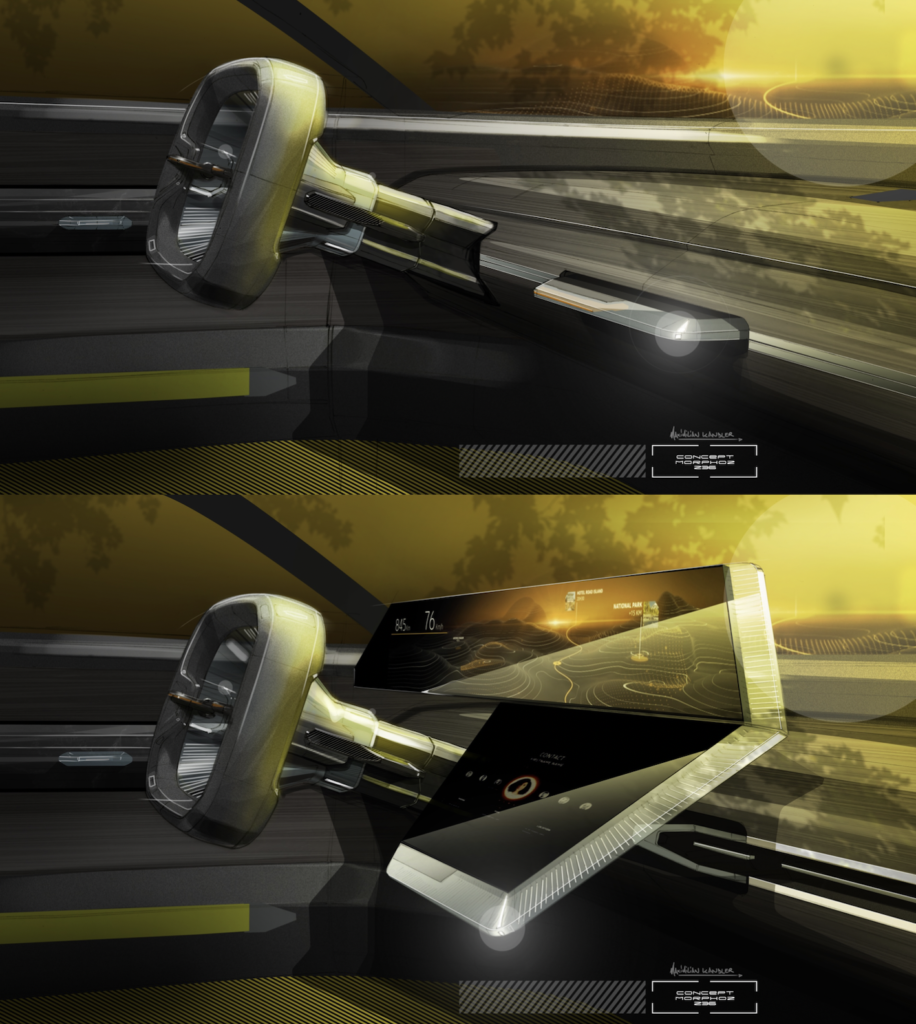
Below, the main smartphone (the driver’s) is “absorbed” by the wood of the console which is deformable in this part of the console! The car recognizes the smartphone of each passenger and can play their own music, thanks to the speakers integrated in the seats.
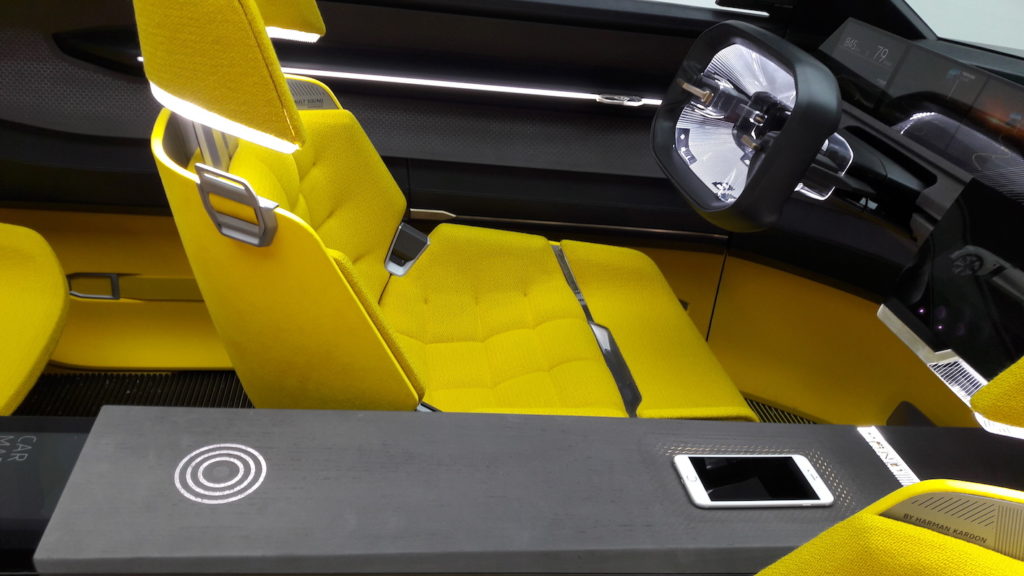
We obviously regret not having been able to take pictures on the Renault stand in Geneva since the automobile event at the beginning of this year was cancelled last Friday. Morphoz stayed in his truck. She can’t wait to get out; and we can’t wait to see her again…
The author is publishing a 356-page book on the history of Renault styling at Editions BJB: “Concept-cars and Renault design prototypes”, (below) due out in early April. You can still pre-order it at a preferential price on this site : http://lignesauto.fr/?p=15225 Many unpublished documents and aborted projects (notably Alpine) are revealed in this book, the second volume of the collection after the one dedicated to Citroën (still available here : https://www.bjbeditions.com/products/concept-cars-et-prototypes-detudes-citroen)
